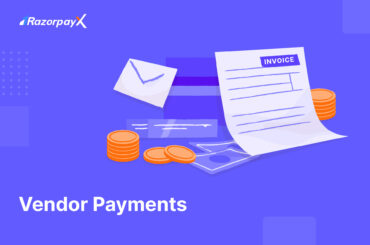Table of Contents
What is a Current Account?
A current account is a type of bank account that enables account holders to deposit and withdraw funds without notice.
Current accounts are mostly opened by business owners to engage in daily transactions like cash deposits, withdrawals and transfers endlessly. Financial institutions offer different types of current accounts allowing a diverse range of features to their customers.
Today most high-growth businesses prefer using digital current accounts, a type of current account that completely eliminates the need to visit a physical bank branch.
Corporate banking solutions like RazorpayX Business Banking+ are tailor-made for the finance needs of businesses, offering payroll, vendor management, payout solutions, escrow, forex and more, all in one single centrally managed dashboard.
Types of Current Accounts
-
Standard Current Accounts
Standard current accounts are the most common types of current accounts which requires the account holder to maintain a minimum average balance every month. This account has a restriction on the payment of any interest. However, the financial institution offers a myriad of features like access to debit cards, cheque book, overdraft facilities and many more.
-
Basic Current Accounts
These current accounts are mostly operated by individuals having lower incomes like pensioners, college-goers, etc. The primary objective of this current account is better management of finances in a systematic way. However, unlike other types of current accounts, restrictions have been imposed on the daily transaction of this current account.
-
Premium Current Accounts
As the name suggests, this current account type offers a plethora of exclusive features and offers to its customers. Hence, individuals or businesses use this current account for operating daily transactions.
-
Packaged Current Accounts
Like the premium current accounts, packaged current accounts offer even more perks and benefits such as medical support or assistance and travel insurance. However, the account holder can enjoy these benefits on account of the payment of nominal monthly account maintenance fees.
-
Foreign Current Accounts
Foreign current accounts have account holders who are Non-Resident Indians or other individuals operating in foreign currencies. These current accounts do not come under national deposit insurance schemes.
How to Open a Current Account Online?
Step 1: Go to the official website of a registered bank and download the current account opening form.
Step 2: Properly fill out personal credentials, bank account details and other necessary sections.
Step 3: Upon filling up, take a printout of this current account application form.
Step 4: Finally, go to the nearest branch of the respective bank and submit this form along with the KYC documents.
Apart from the online method, one can visit the nearest bank branch and collect the form from the concerned department and file it for submission.
What are the Documents Required to Open a Current Account?
- Address proof like Voter ID, Aadhaar card, Ration card, etc.
- Individual PAN Card / Business PAN Card
- Memorandum of Association (MoA) or certificate of incorporation, in case a current account holder is a company or trust
- An agreement in the case of a partnership firm. Also, in this case, one needs to submit a copy of each partner’s ID proof and residential proof.
- A saving account cheque for opening a current account
- Proof of communication address, in case, a current account holder is a company
- The latest passport-size photographs of the nominees
Depending on the type of business, the documents required might change. Get the full list of documents needed to open a current account here.
Features of Current Account
- Transaction Amount – Opening any type of current account is inevitable when you are starting a registered business. One primary feature it offers is it accepts transactions beyond the permitted limit that is present in the savings account.
- Minimum Balance – The maintained minimum balance of a current account is higher than that of a savings account. However, if someone fails to maintain this balance he/she gets subjected to penalties or fines.
- Different Account Holder – In terms of operations, an individual, partners, private and public companies, trusts and associations can open and operate current accounts.
- Unlimited Transaction – Different types of current accounts come with unlimited transactions in a day.
- Smooth Transaction – Small business owners or entrepreneurs mostly use current accounts to process their daily transactions smoothly. However, a single business can have only one current account registered under its name.
- Internet/Mobile Banking – Small business owners having any type of current account will have access to easy Internet banking and mobile banking.
- Overdraft Facility – Current account holders have access to an overdraft facility.
- Short-Term Funds Available – Current account holders can borrow short-term funds. However, they need to pay interest on account of the short-term funds borrowed from the bank.
Benefits of a Current Account
- Large Payments – Upon opening a current account, business owners can receive or pay large volumes of cash systematically.
- Unlimited Withdrawals – Account holders have access to unlimited withdrawals subject to cash transaction fees.
- High Accessibility – Any type of current account can be accessed from any of the locations apart from the bank’s home branch. Only a nominal charge will be required to pay upon depositing cash to the bank accounts from other locations.
- Easy Transaction – With a current account, one can make direct payments in the form of pay orders, cheques and demand drafts.
- Additional Benefits – Current accounts opened for business purposes can unlock some additional benefits. It includes depositing cash or withdrawing funds from any location, getting free inward remittance, carrying multi-location transfers, etc.
- Easy opening – To open a current account, applicants need to follow the KYC guidelines and fill up other necessary details.
- Gives Credit Knowledge – Current accounts enable creditors to know about the creditworthiness of the account holder with the help of interbank connections.
FAQs
What is the difference between a current account and a capital account?
A significant difference between a current account and a capital account is the former shows the total net income of a company or partnership. On the other hand, a capital account determines the total change in the ownership of the national assets of a company in a year.
What is a Balance of Payment?
The balance of payment is a statement that records all the transactions between the referred parties and governments, other individuals and companies. This statement mainly demonstrates the flow of funds within a company or an individual.
What is the general eligibility to open a current account?
Applicants are eligible to open a current account if they acquire the status of the resident individual, partnership firms, sole proprietorship firms, limited liability partnership firms, trusts, and public and private limited companies.
Do current accounts have any charges?
Yes, some of the charges associated with the operation of current accounts are non-maintenance charges, bulk transaction charges, collection and bounced cheque charges, etc. It is also important to consider that different types of current accounts have distinct charges or penalties associated with them.





